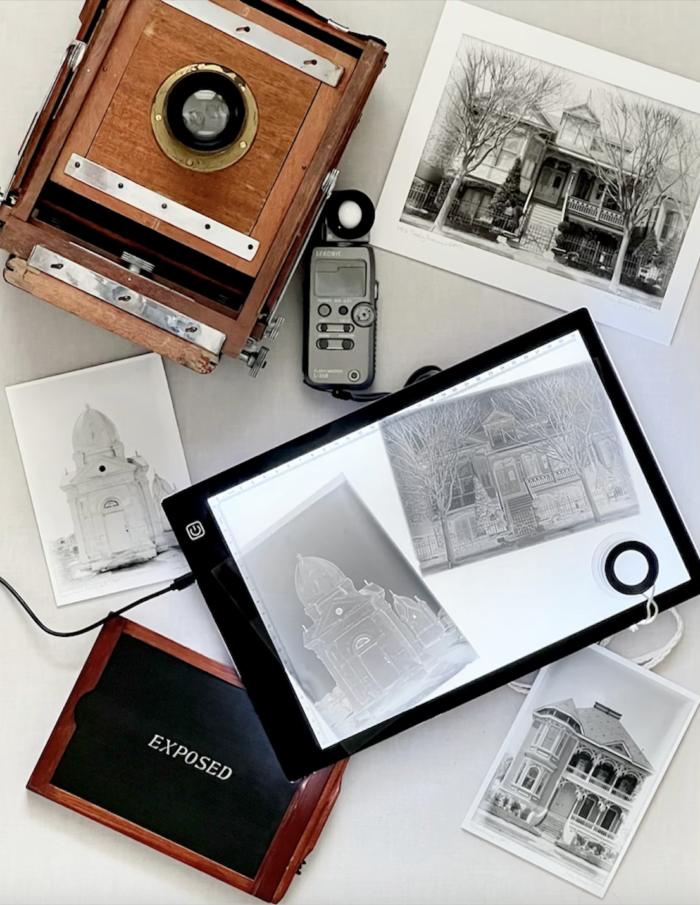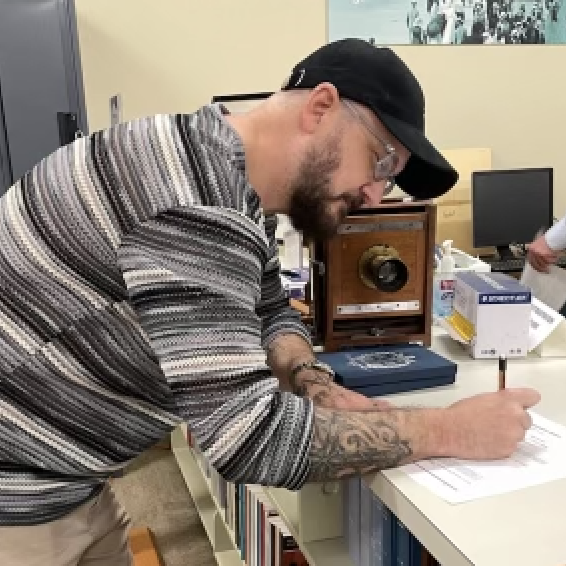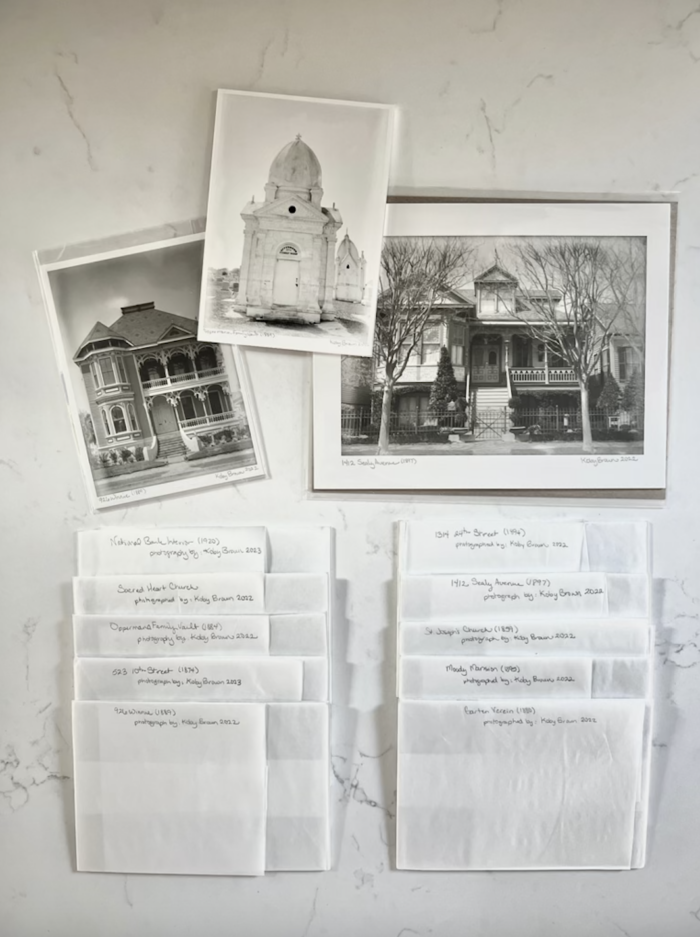The Rosenberg Library Museum maintains and exhibits artifacts that document the history of Galveston and the Republic of Texas, as well as the Library’s fine art collection. Each month, the museum features what they call a “Treasure of the Month.” I am grateful to announce that September’s Treasure of the Month is a set of ten beautiful glass dry plates featuring historic Galveston architecture.

These plates were created by yours truly, Koby Brown Photography, who used what is known as the dry plate process – or gelatin process – to create photographs of the exterior of ten homes that participated in the Galveston Historical Foundation’s Historic Homes Tour. I have been the official Historic Homes Tour photographer for the Galveston Historical Foundation since 2019.

Wet Plate Process vs. Dry Plate Process
Before the invention of film, photographers produced images on glass plates. One was the wet plate process, which is one of the oldest types of photography. It required immediate exposure (usually within 15 minutes) after multiple chemicals were mixed for the plate. These plates were still wet when exposed, earning the process its name. In addition to chemicals, photographers relied on heavy equipment and a portable darkroom to develop photographs; all of which were cumbersome. This method of photography lasted until the 1880s.

In 1871, Dr. Richard L. Maddox, a British physician and photographer, invented a revolutionary new method using dry plates. These plates are essentially negatives on thin glass plates. Unlike the previous process, these glass plates remained dry. Instead they are coated with a gelatin emulsion of silver bromide. These plates could be stored until exposure and be brought back to a darkroom for development afterward. Because these plates were exposed while dry, there was no longer a need for a portable dark room. Photographers could now take photographs anywhere they wanted!
Glass plate photography remained popular until the 1920s, but was eventually replaced by the ease of film photography. Later, this was replaced by digital photography. But love of the glass plate medium is strong enough that some of these processes are making a comeback with today’s photographers, such as Koby Brown.
Koby Brown Photography and the importance of photos
I am a Galveston photographer who created and donated the glass plates in this month’s Treasure of the Month. These plates are durable and will survive longer than film or digital negatives. This makes them perfect for the Rosenberg Library’s archives. In preparation for this months feature I shared, “the impermanence of digital art and photographs has inspired me to explore techniques from the past to create images that will exist in the future.”
Just like Galveston’s historic architecture, these images are “…heirlooms forged by sunlight – treasures so durable they will survive for hundreds of years.” As such, the “…project aims to create an archive preserving the architecture of Galveston that will last as a reference for future generations.”
View the Dry Plates Featuring Historic Galveston Architecture
The Treasure of the month is located on the 2nd floor of Rosenberg Library in the Grand Hallway. It can be viewed during regular library hours. 9:00 AM to 6:00 PM Monday, Friday, and Saturday and 9:00 AM – 8:00 PM Tuesday through Thursday. For museum questions, call 409.763.8854 Ext. 133 or email museum@rosenberg-library.org. For press inquiries, contact the Communications Coordinator.